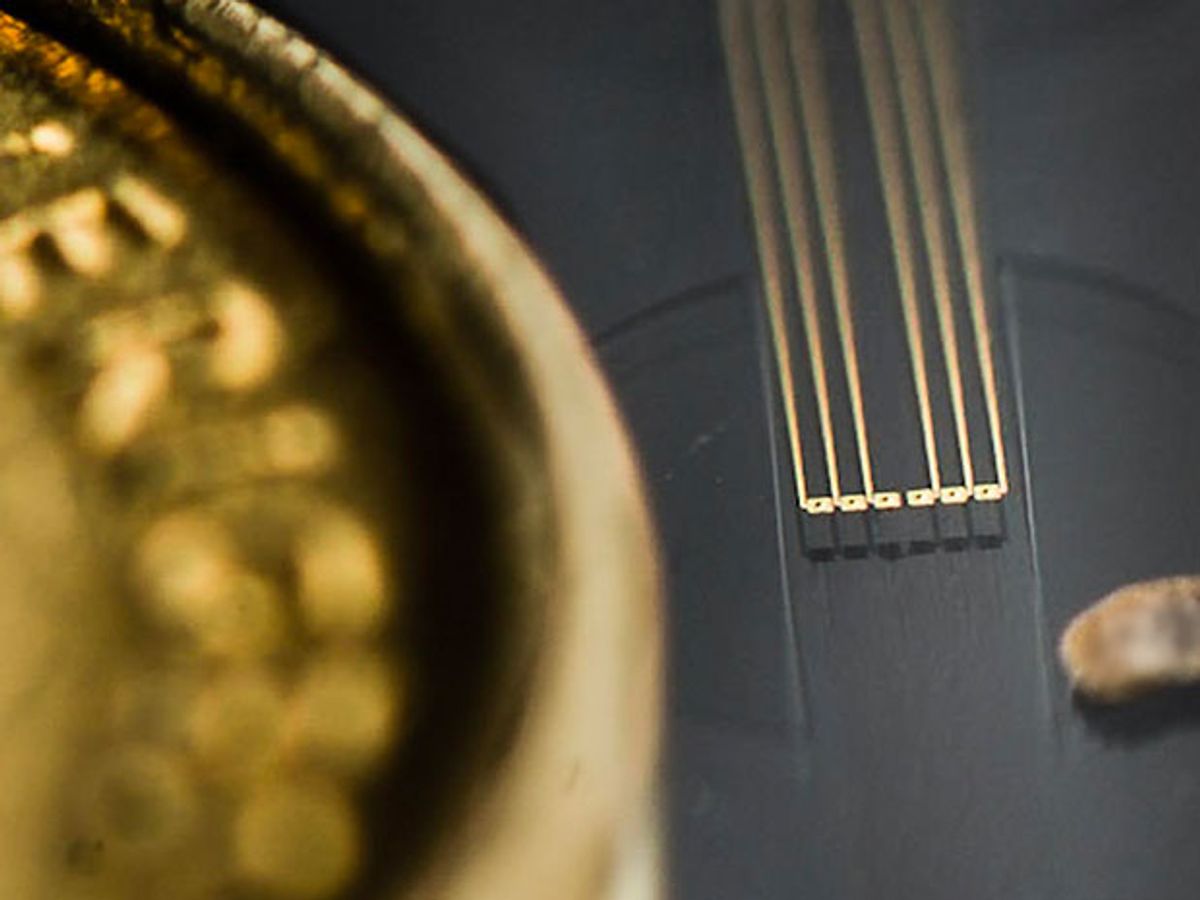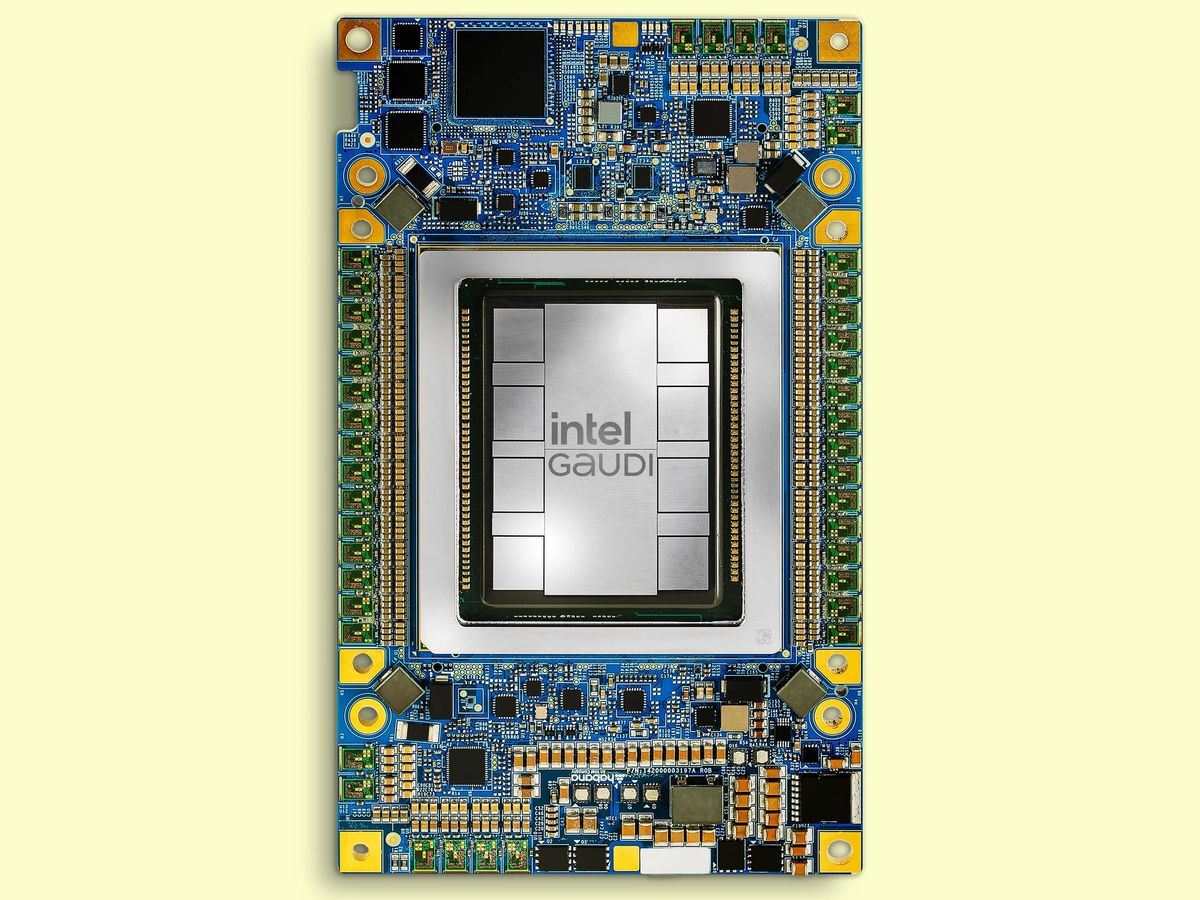Our neurons pass messages thirty times as fast as the blink of an eye. In roughly 10 milliseconds, one neuron releases a chemical from its cell membrane and a receptor on a neighboring cell scoops it up. Message sent.
To date, researchers have been unable to mimic that speedy chemical signaling—not even with microfluidics. Now, a team at Linköping University in Sweden has designed and created an electrically controlled ion pump able to deliver neurotransmitters at close to the same speed as live neurons.
The new device is an improved version of an older organic electronic ion pump (OEIP) created by the same lab. The device relies on electric fields to move charged particles across a thin film without requiring the flow of any liquid. The two-and-a-half-centimeter-long pump is made of metal and polymer channels patterned onto glass via photolithography, and is connected to an electrical source.
The original device moved ions (these could be any type of small, charged particle: neurotransmitters, protons, metal ions, etc.) horizontally along a channel from a source to a target region. That lateral movement was relatively slow; sometimes seconds elapsed between the turning on of the electricity and the ion reaching its destination. The new pump reaps the benefits of vertical movement, taking advantage of the extreme thinness of polymer films.
“Instead of going laterally through several millimeters of film, we’re using the thinness of the film—the same type of film—but going vertically through just a couple hundred nanometers,” says Daniel Simon, a member of the research group who is an assistant professor in the Laboratory of Organic Electronics at Linköping.
It works like this: An electrical current pushes neurotransmitters along six horizontal paths. In the middle of each path is a small outlet. With the flip of a switch, the researchers activate an electric field that changes the course of the ions, quickly shooting the charged particles up a short, vertical channel to the outlet. They then make their way to a chosen destination, such as a cell or a piece of tissue. The team initially tested the device using acetylcholine, a well-known neurotransmitter in the brain and at neuron-muscle cell junctions. They were able to get the chemical to its destination in just 45 to 50 ms.
Each of the new high-speed array’s six ion delivery channels can be individually activated. This gives researchers the freedom to deliver a neurotransmitter to part of a sample. So, they can activate a subset of neurons in a dish with acetylcholine without disturbing the others. The team is now testing the device on live cells.
In addition to expanding our ability to study neuronal signaling, the technique opens the door to the development of brain implants that could speedily deliver neurotransmitters. In the future, the pump could be adapted to augment today’s brain electrical stimulation therapies—such as deep brain stimulation for epilepsy—with chemical treatments, says Simon. “There’s a whole world of opportunity to address neurodegenerative disorders with the actual compounds the body is not signaling properly with.”
Megan is an award-winning freelance journalist based in Boston, Massachusetts, specializing in the life sciences and biotechnology. She was previously a health columnist for the Boston Globe and has contributed to Newsweek, Scientific American, and Nature, among others. She is the co-author of a college biology textbook, “Biology Now,” published by W.W. Norton. Megan received an M.S. from the Graduate Program in Science Writing at the Massachusetts Institute of Technology, a B.A. at Boston College, and worked as an educator at the Museum of Science, Boston.



